The Apple Watch Series 2 Review: Building Towards Maturity
by Brandon Chester on December 20, 2016 8:00 AM EST- Posted in
- Wearables
- Apple
- Apple Watch
- Apple Watch Series 2
Rethinking watchOS
watchOS 1 was good as a first attempt at creating an operating system for smartwatches, especially when one considers that the idea of what a smartwatch is was still up in the air at that time. However, there were obvious issues with the interface, and when I think about the changes that Apple has made since that time it’s apparent to me that these issues stemmed from that unsureness about what would actually define smartwatches as a product. watchOS 2 didn’t really make many big improvements to the overall UI and interaction model on the Apple Watch. It only came out around half a year after the launch of watchOS 1, and much of the focus was on fixing the really serious flaws in the operating system, as well as deploying the WatchKit API so developers could design applications that actually run on the Apple Watch's hardware instead of remotely on the paired iPhone.
With watchOS 3, Apple is taking the opportunity to re-evaluate initial decisions made about how watchOS works. After one and a half years since of the Apple Watch being in the hands of consumers, there’s a better understanding of how users actually use smartwatches. It turns out that some of the big features that Apple advertised with the original Apple Watch have basically gone unused, and have been de-emphasized in the operating system as a result. In doing so, Apple has opened up parts of the interface for new features to be added based on what features users actually do utilize.
When upgrading to watchOS 3 or starting up a new Apple Watch, the interface looks just like watchOS 1 and 2. However, there are some obvious changes that Apple has made, starting with the addition of new watch faces and complications. There are two new Activity watch faces, along with a Minnie Mouse watch face to complement the existing Mickey Mouse face, and a new minimalistic watch face called Numerals. Apple has also made it easy to switch between watch faces by swiping from the edges of the display. I’ve found this to be quite useful, as I like having the Activity Digital face available, but it’s quite dense with information so I often use the Numerals watch face and swipe over to Activity in a situation where it’s more relevant. This wouldn’t be feasible with the previous model of force touching the display and swiping over to another face, which still exists but is really only useful to access the customization options for each face.
Beyond the watch faces, users will notice changes when they first try to open the old glances screen or the friends screen that was triggered by the pill-shaped button on the side of the case. Both of these functions no longer exist in their original form. In the case of the friend screen, you can now send messages and use Digital Touch to communicate with anyone via the Messages app. This definitely makes it more difficult to access these features compared to before where it was a single button press away, but in my experience the only time I ever saw that screen was by accident when the watch failed to recognize my double tap on the side button to access Apple Pay.
As for glances, the screen has been removed from the operating system, but the core idea lives on in another form. In theory, glances provided a way to quickly access relevant information from applications. In practice, they often ended up being a strange middle point between the concept of a complication and a full blown app. In some situations, they would display information relevant to the current context, like the current song in the now playing glance, or the weather in the weather glance, and you could tap them to open their associated application. Others like the heart rate glance didn’t have any associated application, and basically acted like an application that was only accessible from the glances screen. There was also the issue of applications not being loaded when tapping on a glance, which would lead to a huge delay and sometimes a loss of context when the application finally loaded.
watchOS 3 introduces a new app caching model that makes glances obsolete for the most part. However, it’s still necessary to have a way to quickly access commonly used applications. To solve this problem, Apple has introduced a new app switcher called the Dock which can be accessed using the pill-shaped button that was previously used to access the friend screen. This screen can have up to ten applications which are selected by the user, plus one slot for the most recently used application that isn’t pinned in the list. These applications are kept cached in memory, which means they can be rapidly resumed when opened. This provides quick access to common applications, while also solving many of the issues that the Apple Watch has had with long app load times. In general, you’ll only use a small number of Apple Watch applications frequently, and being able to keep ten of them cached in memory with near-instant loading alleviates the load time issues for those key applications.
With Glances gone, Apple was able to make a new screen accessible by swiping up on a watch face. The new screen is essentially a version of Control Center for watchOS, and it expands upon a similar feature that existed in the Glances screen in previous versions of watchOS. By implementing the screen more like an application and less like a glance, Apple is able to add more functionality by making it a scrollable layout. There’s now a view that displays the current battery level, which is useful now that there’s no Glance to provide the same information. There’s also a button to manually lock the watch, and on the Series 2 a button that is used to eject water from the casing via the speaker after the watch has been submerged.
Pressing the Digital Crown still brings you to the Carousel screen, but as I mentioned above, the Dock provides access to most of the apps that a person uses frequently, so it’s not often that one has to go to the Carousel and try to tap on tiny icons to open apps. With that in mind, it is kind of odd that the button which is most analogous to the iPhone’s home button brings you to a screen that you rarely want to go to, but I suppose that the removal of the friend screen meant that putting the Dock in its place was the most reasonable decision rather than also changing how Carousel is accessed just so the Dock would be tied to the Digital Crown.
In general, the new application caching in watchOS 3 has made applications genuinely useful where they weren’t previously simply due to long load times or issues with the app never loading at all. The improvements made to the SiP in Series 2 also play a large role in speeding up app load times when apps aren’t cached in memory. However, as someone who used the original Apple Watch on watchOS 1 and 2, the awful performance back then has essentially conditioned me to not use applications on the watch, and I’ve had to actively think about using the apps on the watch now that they’re actually reliable. This won’t be an issue for new adopters, but I think anyone who is familiar with the original app experience on the Apple Watch will have the same aversion to using the apps that I do. In that sense, it’s important for Apple to maintain the quality of the user experience in order to mend the trust of users who were turned away by the problems that existed in the past.



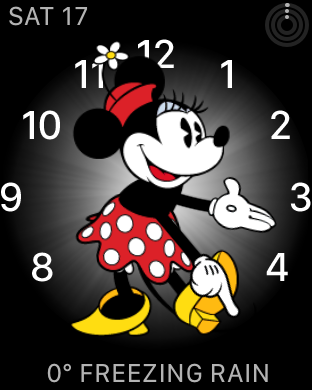
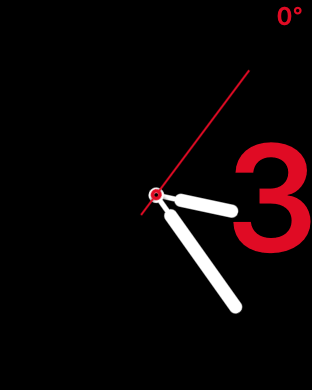
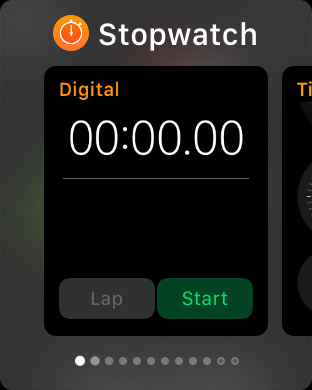
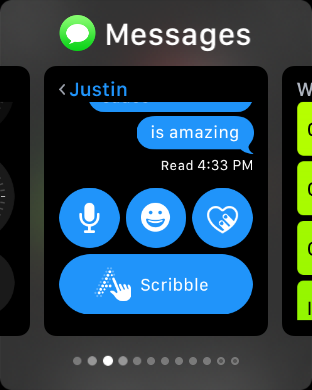
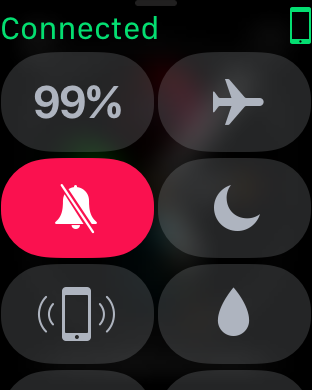
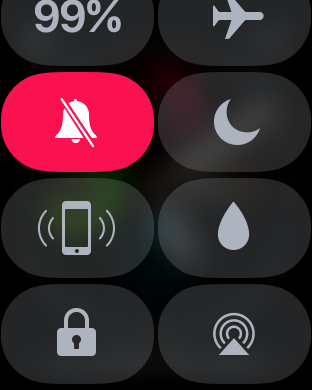

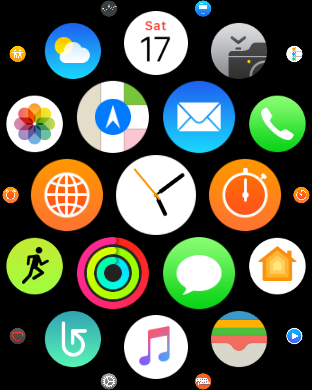
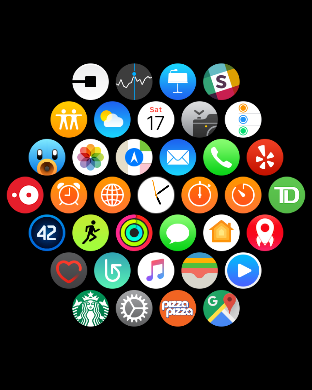








126 Comments
View All Comments
ddriver - Tuesday, December 20, 2016 - link
It has got to be the shortest lived fad so far.name99 - Tuesday, December 20, 2016 - link
And IMHO you have no idea what you are talking about. This is EXACTLY the same as the nonsense we heard when the iPhone came out: "why do I want a phone that can run a browser when my PC has a bigger screen? my feature phone already runs apps fine. and it's sooo expensive".If you haven't used an aWatch you don't have a right to comment on it, it's that simple.
Brandon actually left out a huge number of use cases.
- He left out Siri -- I frequently use this especially for reminders "when I get home, remind me to pick up the alcohol swabs", "add soy milk to list Costco", "how many grams is 3.5 ounces".
- He left out notifications which again are really nice on the wrist.
- I have five different watch faces: sleepytime which tracks my sleep and uses big red numbers so less sharp when I see it in the dark; everyday which is dense with info - time, date (tap to get today's calendar events), weather, activity rings (small) next alarm, time in one other time zone; workout --- big activity rings, heart rate, button to get to workout app, battery left; space and time which allows easy access to Maps, where my friends are (Find my Friends) , and HomeKit control; and Photos (random photos of adorable baby animals that make my smile every time I see them).
I swipe between all of these every day.
In the dock I have "Now Press Record" which records what it hears and stores it to the cloud --- ready in case I have an encounter with police or other bolshy authority. Next is the audio controller app. (Unfortunately the one BIG missing feature on aWatch today is decent handling of audiobooks as opposed to just music. Hopefully in WatchOS4 ...) Next the Nest Camera app. It doesn't do much (in particular it does NOT send you a snapshot of what the camera is seeing) but it DOES allow you very easily and quickly to validate that the camera is correctly armed when you expected it to be. Next Automatic (just gives direction to where you parked, but that's all you want on the wrist). Next Homekit which I, for now, primarily use to check out the temperature in my bedroom.
Some other subtleties the article missed. In addition to replying to texts via voice, you can also write one letter at a time. This might sound dumb but is occasionally useful for a short reply that needs to be exact. (Like giving a price or a time.) And with WatchOS 3 and Series 2 the device FEELS delightful in a way that Series 0 did not because the performance just wasn't there.
Oh and Apple Pay is really convenient (modulo the on-going stores too stupid or too cheap to support wireless payments).
It's not all perfect. The one HUGE case that doesn't work well is if you want to go on an outdoor walk/run to somewhere you don't know, so you want both Maps and Workout to be active simultaneously. In this case both apps want to control the screen, there's no ideal way to flip between them and in one case their fighting landed up wedging my watch (that was with an older version of the OS so hopefully it's fixed now). There seems room for at least some special-case intelligence here to appreciate that this is a common situation and to handle it better.
As for how well they are doing, like other commenters on the internet, I'm starting to see them more and more. For the first year I never saw one in the wild, now I see one at least once a week, on the wrists of people like cashiers or waiters.
negusp - Tuesday, December 20, 2016 - link
But for $400? I made my argument against premium priced wearables.fanofanand - Wednesday, December 21, 2016 - link
"If you haven't used an aWatch you don't have a right to comment on it, it's that simple."Interesting logic. So nobody is allowed to have an opinion about anything they don't personally own or haven't experienced? I suggest you start out by telling all of the protesters who were never in a war that they don't have the right to an opinion. To all the folks protesting police for questionable behavior, if they haven't personally been shot then they have no right to an opinion. If you don't own a 2014 Ford Mustang, you have no right to have an opinion on it. To all the vegans who think meat is murder, if they've never had a steak they have no right to their opinion.
Simple as that.
monopodman - Friday, December 23, 2016 - link
A world would definitely be a better place with fewer opinions from people who have no idea. But yeah, that's just a dream.MonkeyPaw - Tuesday, December 20, 2016 - link
I bought a Series one for $190 on Black Friday. I like it quite a bit for that price, and I've tried other bands as well. I like that I can keep my phone on silent all day long, and I don't even have to dig it out of my pocket (or even have it on me) for many things. It's also compatible with my work's Outlook setup, so I have my calendar events right on the face. Having an extra motivator to be active is nice as well.I get that these aren't for everyone, and I think $400 is too much, but I like the Apple Watch for what I use it for.
amdwilliam1985 - Tuesday, December 20, 2016 - link
my wife just got a XiaoMi fit 2 for $200HKD.It got like close to 1 month of battery life(wtf), tells time, heart time, sleep tracking, vibrate with phone call and notification.
Midwayman - Wednesday, December 21, 2016 - link
I don't have an issue paying $400 for a watch. I have plenty of those. They even do far less. The real issue is the lifespan. I can expect decades out of a quality traditional watch. A smartwatch I'm probably lucky if it lasts 3 years between battery issues and plain getting outdated. Its just another fairly large recurring cost. You have to pick and choose which tech products are worth keeping up with I guess.jaydee - Wednesday, December 21, 2016 - link
It's all about Apple trying to convince you that your time an effort is such a valuable commodity, that you have to buy a $400 device to do 20% of what your $800 iPhone can do, just by looking at your wrist instead of the arduous and back-breaking task of pulling something out of your pocket.Hence Brandon's comment in the article:
"Being able to check the time, the weather, the date, and other information simply by raising your wrist is just a convenience, and it's nothing your iPhone can't do as well, but it's a convenience that I wouldn't want to give up now that I have it."
KoolAidMan1 - Thursday, December 22, 2016 - link
I see wearables everywhere now. The most common are Apple Watches and Fitbits.